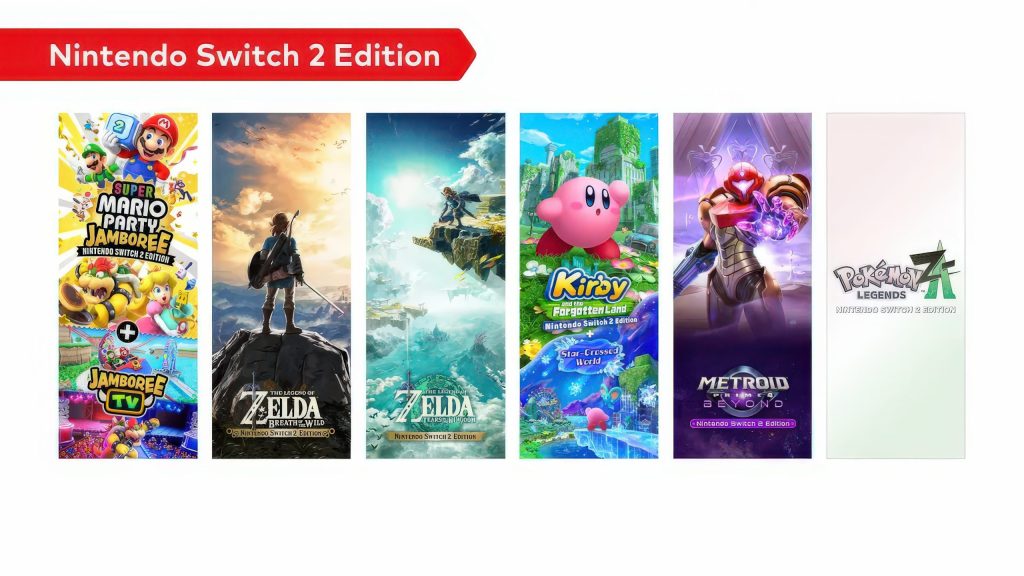The Nintendo Switch 2 has launched with a remarkable impact, selling an impressive 3.5 million units globally within just four days of its debut. This staggering figure highlights strong consumer demand for Nintendo’s latest console, reflecting both the loyalty of its existing fanbase and the anticipation built over the years since the original Switch’s release. However, while the hardware side of the launch has proven successful, the same cannot be said for third-party software sales. Notably, a substantial 62% of physical game sales in the US were for first-party Nintendo titles, with similar trends observed in the UK.
First-Party vs. Third-Party Sales
Following the launch of the Nintendo Switch 2, statistics indicate a stark division in game sales. In the UK, 48% of physical game sales were attributed to first-party Nintendo games, escalating to an overwhelming 86% when including the blockbuster title, Mario Kart World. Such figures signal a significant trend: while Nintendo continues to draw players to its exclusive franchises, third-party publishers are struggling to establish a foothold. Reports from The Game Business reveal that many third-party developers anticipated stronger sales performance. One publisher expressed disappointment, stating their sales numbers were “below our lowest estimates.” The only notable exception appears to be Cyberpunk 2077, which, according to Circana, became the third best-selling game in the U.S. during Switch 2’s launch week.
Comparative Analysis of Launch Periods
While it may seem that third-party titles are floundering in a sea of Nintendo’s first-party games, it’s essential to contextualize these early figures. Mat Piscatella, an analyst with Circana, noted that the share of physical software sales from third-party titles during the first week of the Switch 2 launch reached nearly 40%, a significant improvement compared to the less than 20% share during the initial launch period of the original Switch. This indicates a potential for growth among third-party games as the console’s user base expands and more titles are released.
Third party unit share of Switch 2 physical software during week 1 reached just shy of 40%. For month 1 of the Switch launch it was less than 20%.
— Mat Piscatella (@matpiscatella.bsky.social) 2025-06-19T17:15:19.742Z
Despite the initial struggles, there is optimism regarding the future of third-party titles on the Switch 2. The enhanced hardware capabilities may allow for more ambitious projects to be realized on the platform, enabling developers to produce ‘impossible ports’—games previously deemed unplayable on the original Switch. The successful adaptation of titles like The Witcher 3 to the original Switch demonstrates that, when effectively optimized, third-party games can thrive on Nintendo hardware.
Looking to the Future
As of now, it’s premature to make definitive judgments regarding the long-term prospects for third-party games on the Switch 2. A significant factor contributing to the initial disparity in sales could stem from the console’s robust library of exclusive games, which has historically attracted players. As noted by Piscatella, “approximately half of all US owners of either the PS5 or Xbox Series also own a Switch,” suggesting that many consumers are drawn to Nintendo’s franchises, especially for titles like Mario and Zelda.
Additionally, many gamers who might have been interested in third-party games likely already played them on their current-gen consoles or PCs. The appeal of third-party titles on the Switch 2 could hinge on the release of simultaneous titles alongside major Nintendo releases, as seen with previous hardware launches. This symbiotic relationship may indeed allow for a flourishing third-party ecosystem if timing and marketing strategies are appropriately aligned.
Quick Reference Table
| Statistic | Value |
|---|---|
| Switch 2 Units Sold (First 4 Days) | 3.5 Million |
| US First-Party Sales Percentage | 62% |
| UK First-Party Sales Percentage (Excluding Mario Kart) | 48% |
| Third-Party Sales Share (Week 1) | ~40% |
| Third-Party Sales Share (Switch 1 Launch) | <20% |
In summary, while the initial sales figures suggest a dominance of first-party titles on the Nintendo Switch 2, the shifting landscape and potential for third-party success remain promising as the console continues to establish itself in the competitive gaming market.

